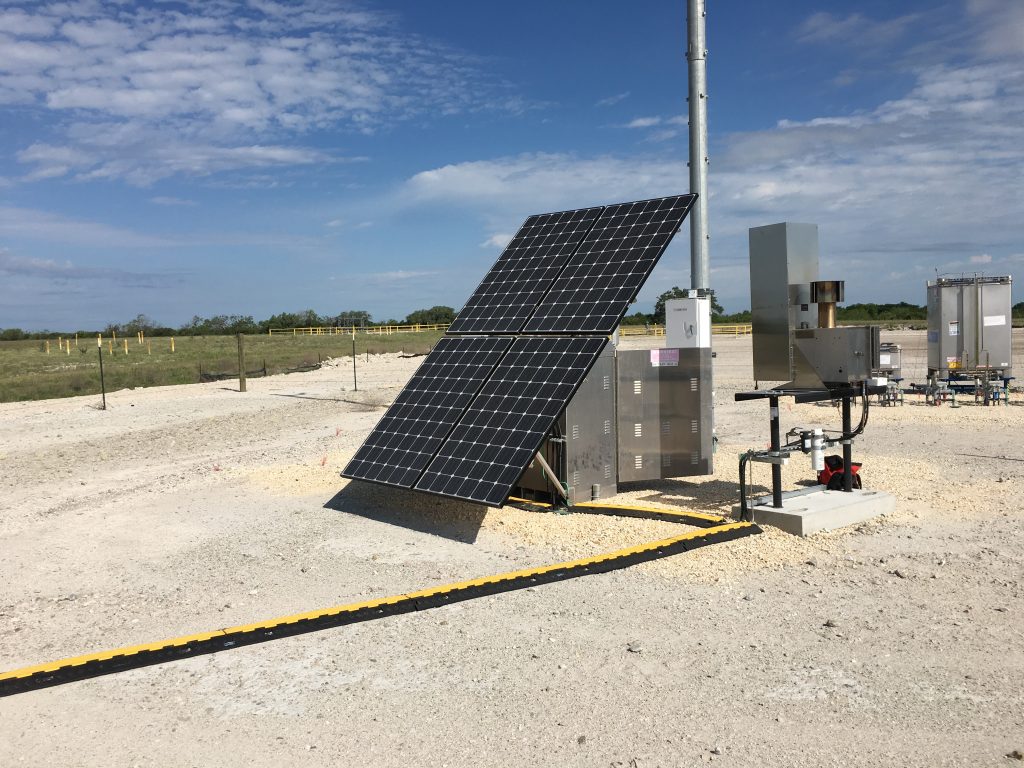Integrating renewable energy in oil and gas operations
Driven by the global recognition of the impacts of climate change, there is a move towards low carbon emissions, alternative and renewable energy sources, and development of technologies to capture the carbon produced in conventional energy extraction and production. Innovative products such as the Gentherm Global Power Technologies GlobalSolarHybrid™ system are being developed to help energy explorers integrate renewable energy in their operations and lower the cost of production.

Limiting CO2 and other greenhouse gas emissions, while simultaneously meeting rapid energy demand growth, will require fundamental changes to the way the world produces and consumes energy, and investments in less carbon-intensive energy production and energy efficiency technologies.
At the end of 2017, National Energy Resources Australia (NERA) approved funding for eight innovative new projects, including initiatives aimed at introducing clean technologies into the sector – a key priority area outlined in NERA’s Sector Competitiveness Plan, a ten year strategic roadmap for Australia’s oil, gas, coal and uranium industries.
NERA Chief Executive, Miranda Taylor, said additional investment in future fuels research and development is critical to ensure Australia successfully and sustainably transitions towards a low-carbon economy.
“NERA actively supports the transformation towards a more diverse energy mix and works with industry partners across the supply chain to create partnerships with clean and renewable technologies,” Ms Taylor said.
“A decarbonised energy future cannot be achieved without supporting Australia’s traditional energy resources sector and leveraging its global competitive advantage, existing infrastructure, assets and technology into a smart, high value and sustainable domestic energy sector that can reliably meet Australia’s future energy needs.”
One of these projects is a partnership between Carnegie Clean Energy and Eni Australia, which will integrate solar energy technology at the Blacktip Wellhead Platform in the Timor Sea.
Bringing clean energy to remote locations
Solar energy utilisation within the oil and gas industry will reduce its fossil fuels consumption, and allow it to meet its energy requirements in locations where conventional fuels are limited. With the price of solar generation falling dramatically, it is also allowing oil and gas companies to reduce their costs in a sustainable way.
In the event of an extended run of bad weather, an extreme drop in temperature or variations in solar radiation from year-to-year however, solar PV panels may not be enough on their own.
A hybrid system such as the Gentherm Global Power Technologies GlobalSolarHybrid™ solution combines two sources of electricity, PV panels and thermoelectric generators (TEGs) to decrease the size and cost of the PV and battery requirements while keeping the system reliability at the highest level.
The GlobalSolarHybrid™ solution works by monitoring the battery bank’s state of charge and starts the generator when the battery starts to drain too low. As long as the battery stays above a 50 per cent state of charge with the PV array delivering enough energy to the load, the generator never starts. However, as a backup power source, the generator is able to deliver enough energy to the system as and when required to keep the load fed.
A thermoelectric generator has no moving parts but is designed to convert heat directly into electricity. As heat moves from a gas burner through a thermoelectric module, it causes an electrical current to flow.
Gentherm Global Power Technologies’ remote power systems are intended for companies that require uninterrupted power in remote locations every day of the year. The environmentally friendly systems minimise waste and the consumption of fossil fuels, while generating reliable and predictable power to equipment.
Wade Elofson, founder of Australian energy and resource focused business development company Powered, said that greater collaboration is needed between the resources and renewable sectors.
“We are in the midst of an energy transition and there are a number of opportunities for the oil and gas industry to work with the renewable energy industry to bring about a clean energy future.
“Natural gas will remain an important fuel as it helps integrate variable renewables. The oil and gas industry may take up renewables in their operations and as an investment, especially in technologies with important synergies such as solar/natural gas power generation.
“Ultimately, collaboration is key and the best way forward to providing Australia with a reliable, affordable and sustainable energy supply.”
For more information, please contact info@poweredaus.com.au or call Wade Elofson on +61 474 128 517.


